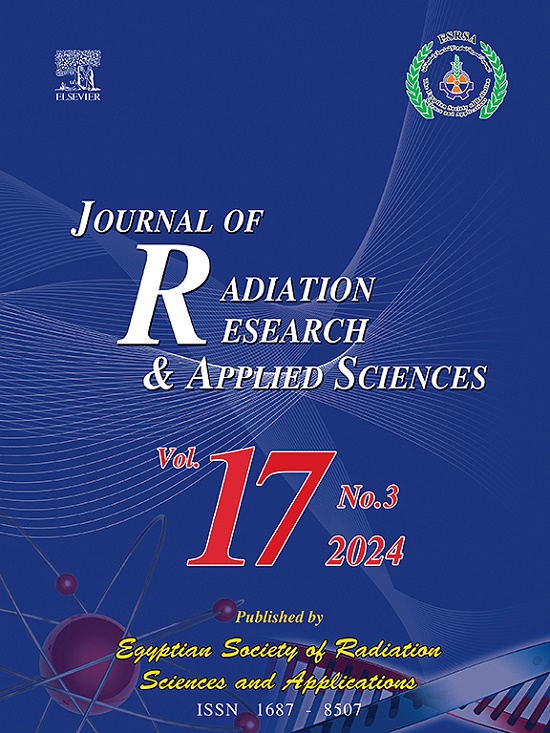混合对流混合纳米流体流过具有质量吸力的倾斜拉伸/收缩薄片时热辐射的影响
IF 1.7
4区 综合性期刊
Q2 MULTIDISCIPLINARY SCIENCES
Journal of Radiation Research and Applied Sciences
Pub Date : 2025-03-15
DOI:10.1016/j.jrras.2025.101420
引用次数: 0
摘要
采用数值模拟方法研究了水基Cu-Al2O3混合纳米流体在可拉伸/可收缩薄片上通过倾斜浮力产生的质量吸力对辐射流的影响。将物理问题的模型(偏微分方程)简化为具有适当相似变量的常微分方程。利用MATLAB软件中的bvp4c求解器对简化后的方程进行求解。在存在物理参数的情况下,得到了速度、温度、表面摩擦和换热率的多重解。结果表明,增加铜纳米颗粒的用量可以降低剪切应力和热容。增加混合对流参数可使剪切应力上升3.32%,换热量上升17.61%,而增强拉伸/收缩参数可使剪切应力降低9.71%。此外,吸力的增加导致速度剖面的第一个解的加速,但阻碍了速度剖面的第二个解和温度剖面上的两个解的速度。这些发现与先前的研究相验证,并通过表格进行了讨论。本文章由计算机程序翻译,如有差异,请以英文原文为准。
The implication of thermal radiation in a mixed convection hybrid nanofluid flow past an inclined stretching/shrinking sheet with mass suction
The impact of mass suction on the radiative flow through an inclined buoyancy force across a stretchable/shrinkable sheet induced by water-based Cu-Al2O3 hybrid nanofluids is numerically performed. The model (partial-differential equations) of the physical problem is reduced to the ordinary differential equation with an appropriate similarity variable. The reduced equations are then solved with the support of the bvp4c solver in MATLAB software. The multiple solutions for the velocity, temperature, skin friction, and heat transfer rate are acquired in the presence of physical parameters. The results suggest that enhancing the amount of Copper (Cu) nanoparticles decelerates both shear stress and heat capacity. Increasing the mixed convection parameter upsurges shear stress by about 3.32 % and heat transfer by 17.61 %, while a stronger stretching/shrinking parameter reduces shear stress by up to 9.71 %. In addition, an upsurge in suction leads to the boost of the first solution of the velocity profile but hinders the pace of the second solution of the velocity profile and both solutions on the temperature profile. The findings are validated with previous research and discussed through tables.
求助全文
通过发布文献求助,成功后即可免费获取论文全文。
去求助
来源期刊

Journal of Radiation Research and Applied Sciences
MULTIDISCIPLINARY SCIENCES-
自引率
5.90%
发文量
130
审稿时长
16 weeks
期刊介绍:
Journal of Radiation Research and Applied Sciences provides a high quality medium for the publication of substantial, original and scientific and technological papers on the development and applications of nuclear, radiation and isotopes in biology, medicine, drugs, biochemistry, microbiology, agriculture, entomology, food technology, chemistry, physics, solid states, engineering, environmental and applied sciences.
 求助内容:
求助内容: 应助结果提醒方式:
应助结果提醒方式:


